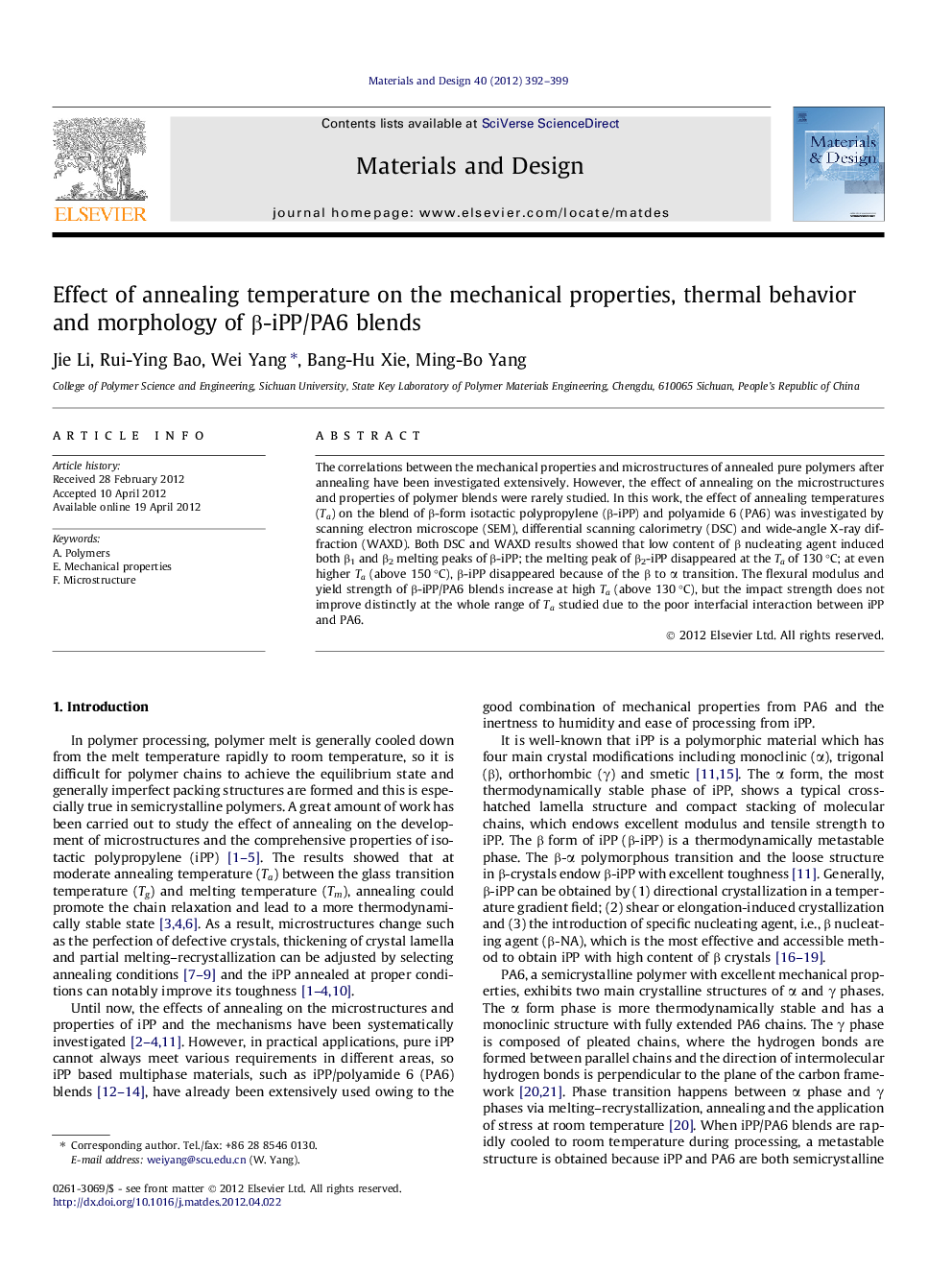| Article ID | Journal | Published Year | Pages | File Type |
|---|---|---|---|---|
| 830618 | Materials & Design (1980-2015) | 2012 | 8 Pages |
The correlations between the mechanical properties and microstructures of annealed pure polymers after annealing have been investigated extensively. However, the effect of annealing on the microstructures and properties of polymer blends were rarely studied. In this work, the effect of annealing temperatures (Ta) on the blend of β-form isotactic polypropylene (β-iPP) and polyamide 6 (PA6) was investigated by scanning electron microscope (SEM), differential scanning calorimetry (DSC) and wide-angle X-ray diffraction (WAXD). Both DSC and WAXD results showed that low content of β nucleating agent induced both β1 and β2 melting peaks of β-iPP; the melting peak of β2-iPP disappeared at the Ta of 130 °C; at even higher Ta (above 150 °C), β-iPP disappeared because of the β to α transition. The flexural modulus and yield strength of β-iPP/PA6 blends increase at high Ta (above 130 °C), but the impact strength does not improve distinctly at the whole range of Ta studied due to the poor interfacial interaction between iPP and PA6.
Graphical abstractFigure optionsDownload full-size imageDownload as PowerPoint slideHighlights► Effect of annealing on properties and morphology of β-iPP/PA6 blends was studied. ► At low Ta (<130 °C), Ef and σY increases with increasing Ta. ► At high Ta (⩾150 °C), Ef and σY are enhanced sharply.
